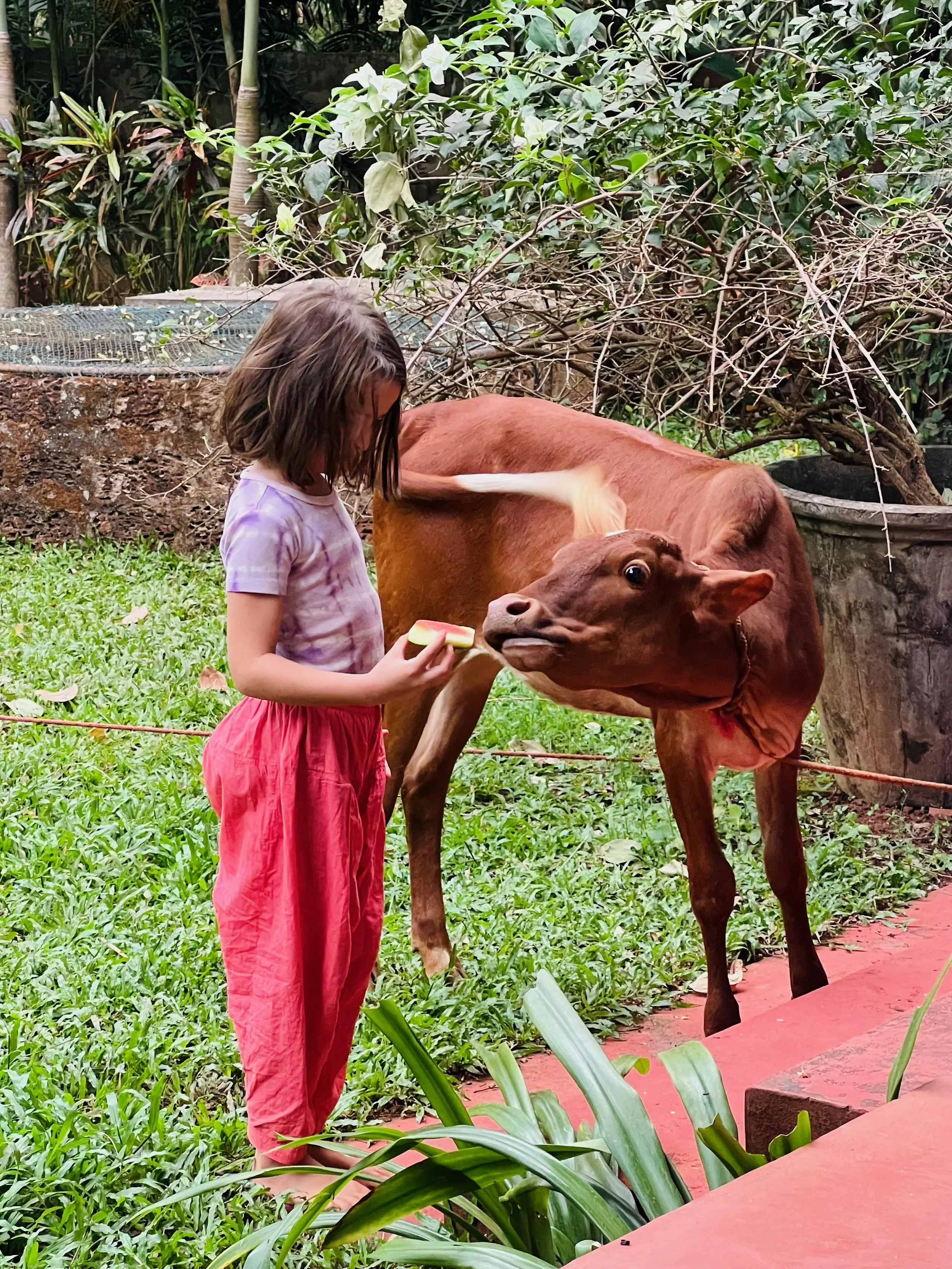practice is discipline. it requires effort, sacrifice, patience, courage, curiosity, discernment and commitment in order to continue on the journey. showing up daily to meet and relate with what arises from our experiences is challenging. this is particularly true when our minds are running away the second we emerge from sleep in the morning. what to do?
it’s said that children learn more wholly from embodied example, rather than being told what is right or true. somewhere in our lives a switch flips and we start to believe acquisition of facts and language based knowledge hold more weight or are more based in reality than our felt experience. perhaps this can be at least partially attributed to the societal pressures of a culture overly extrovert focused. children however are riding the wave of embodied consciousness - learning through imitation, repetition, and rhythm. they build understanding and relationship through action, stepping into each sensory experience available to what’s new. when repetition and rhythm are applied, the activities of each day, even if they vary, are locked into a familiarity. this familiarity creates a bed of comfort and safe space within which to develop and grow slowly over time. certain activities happen around the same time and in the same place every day. over time this builds a particular type of neutrality, not unlike an uncluttered space. this neutrality forms a secure space holder for whatever variations occur within the activity itself. is this beginning to sound familiar? yes. just like a mysore room!
when patterns are impressed upon the body consistently, things come up. depending on the nature of the pattern and it’s variables, what comes up could be challenging/difficult or bring ease. for example: if you get out of bed at the same time each day, follow a simple routine, and get to practice at the same time, etc. building that imprint will most likely make it easier over time. however, if you have knee pain and the pattern you impress is to continue to push into the knee pain again and again, then likely there will not be ease. the problem may exacerbate.
what arises toward our individual attention during morning practice, and how we manage it, is the Yoga. whether joy, boredom, pain, pressure, exhaustion, bliss, frustration, satisfaction, dullness, fear, sadness, etc. no matter. it’s all a part of who we are, and is the very material for exploring self and cultivating discernment. we build impressions onto our cellular selves, suggesting that at this time, in this place, each day, we will engage in observation while moving through and meditating on a sequence. inevitably, micro (or sometimes not so micro) versions of our patterning emerge in practice. over time, the repetition of showing up and making effort builds upon itself, reorganizing our impressions and experiences. staying in the stream keeps us in that flow of change.
if you’re struggling to keep a consistent daily practice, it might be wise to keep things simple. it’s one step at a time, so take small strides. otherwise your organism will be unhappy. here are some suggestions and few thoughts. if they don’t apply to you, no need to linger on them.
1) get up at the same time each practice day.
2) practice at the same time each day.
3) practice 6 days a week. rest one day.
4) if you can’t do your entire practice on a particular day, do a little.
5) don’t let the thinking keep you in bed! put your feet on the floor, stand up, and get going.
6) show up!
7) notice your tendencies and allow for or strive towards balance.
8) take practice very seriously. take who you think you are and your role in practice less seriously.
9) work towards a practice that has more to do with dispassionate observation, even if it means dispassionately observing your judgments.
10) let the postures come to you as much as you strive to meet them. in other words, leave space for the divine. the asanas are tools for potential expansion, not for minimizing or to “figure out”.
11) proficiency in asana doesn’t necessarily mean someone is practicing Yoga.
12) perfection does not exist - thank goodness.
13) if none of this applies to you, ignore it.
while making some of these suggestions in a class years ago someone asked, “what about sleep? sleep is important”. i responded, “i’m not here to promote sleep. i’m here to promote practice”. if you have a desire to get to know yourself, and this practice resonates as a tool and resource in that exploration, the room and supportive community are there for you. use them.

